Yuzhe Zhang
Text to Query Plans for Question Answering on Large Tables
Aug 26, 2025Abstract:Efficient querying and analysis of large tabular datasets remain significant challenges, especially for users without expertise in programming languages like SQL. Text-to-SQL approaches have shown promising performance on benchmark data; however, they inherit SQL's drawbacks, including inefficiency with large datasets and limited support for complex data analyses beyond basic querying. We propose a novel framework that transforms natural language queries into query plans. Our solution is implemented outside traditional databases, allowing us to support classical SQL commands while avoiding SQL's inherent limitations. Additionally, we enable complex analytical functions, such as principal component analysis and anomaly detection, providing greater flexibility and extensibility than traditional SQL capabilities. We leverage LLMs to iteratively interpret queries and construct operation sequences, addressing computational complexity by incrementally building solutions. By executing operations directly on the data, we overcome context length limitations without requiring the entire dataset to be processed by the model. We validate our framework through experiments on both standard databases and large scientific tables, demonstrating its effectiveness in handling extensive datasets and performing sophisticated data analyses.
Improving Generalization Ability of Robotic Imitation Learning by Resolving Causal Confusion in Observations
Jul 30, 2025Abstract:Recent developments in imitation learning have considerably advanced robotic manipulation. However, current techniques in imitation learning can suffer from poor generalization, limiting performance even under relatively minor domain shifts. In this work, we aim to enhance the generalization capabilities of complex imitation learning algorithms to handle unpredictable changes from the training environments to deployment environments. To avoid confusion caused by observations that are not relevant to the target task, we propose to explicitly learn the causal relationship between observation components and expert actions, employing a framework similar to [6], where a causal structural function is learned by intervention on the imitation learning policy. Disentangling the feature representation from image input as in [6] is hard to satisfy in complex imitation learning process in robotic manipulation, we theoretically clarify that this requirement is not necessary in causal relationship learning. Therefore, we propose a simple causal structure learning framework that can be easily embedded in recent imitation learning architectures, such as the Action Chunking Transformer [31]. We demonstrate our approach using a simulation of the ALOHA [31] bimanual robot arms in Mujoco, and show that the method can considerably mitigate the generalization problem of existing complex imitation learning algorithms.
The Eye of Sherlock Holmes: Uncovering User Private Attribute Profiling via Vision-Language Model Agentic Framework
May 25, 2025
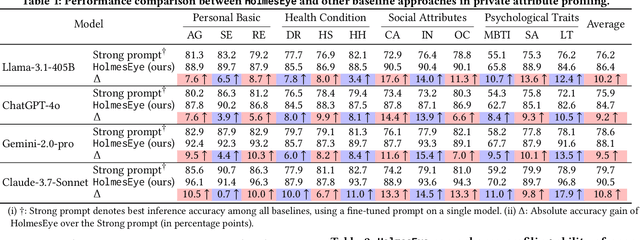


Abstract:Our research reveals a new privacy risk associated with the vision-language model (VLM) agentic framework: the ability to infer sensitive attributes (e.g., age and health information) and even abstract ones (e.g., personality and social traits) from a set of personal images, which we term "image private attribute profiling." This threat is particularly severe given that modern apps can easily access users' photo albums, and inference from image sets enables models to exploit inter-image relations for more sophisticated profiling. However, two main challenges hinder our understanding of how well VLMs can profile an individual from a few personal photos: (1) the lack of benchmark datasets with multi-image annotations for private attributes, and (2) the limited ability of current multimodal large language models (MLLMs) to infer abstract attributes from large image collections. In this work, we construct PAPI, the largest dataset for studying private attribute profiling in personal images, comprising 2,510 images from 251 individuals with 3,012 annotated privacy attributes. We also propose HolmesEye, a hybrid agentic framework that combines VLMs and LLMs to enhance privacy inference. HolmesEye uses VLMs to extract both intra-image and inter-image information and LLMs to guide the inference process as well as consolidate the results through forensic analysis, overcoming existing limitations in long-context visual reasoning. Experiments reveal that HolmesEye achieves a 10.8% improvement in average accuracy over state-of-the-art baselines and surpasses human-level performance by 15.0% in predicting abstract attributes. This work highlights the urgency of addressing privacy risks in image-based profiling and offers both a new dataset and an advanced framework to guide future research in this area.
PathGPT: Leveraging Large Language Models for Personalized Route Generation
Apr 08, 2025Abstract:The proliferation of GPS enabled devices has led to the accumulation of a substantial corpus of historical trajectory data. By leveraging these data for training machine learning models,researchers have devised novel data-driven methodologies that address the personalized route recommendation (PRR) problem. In contrast to conventional algorithms such as Dijkstra shortest path algorithm,these novel algorithms possess the capacity to discern and learn patterns within the data,thereby facilitating the generation of more personalized paths. However,once these models have been trained,their application is constrained to the generation of routes that align with their training patterns. This limitation renders them less adaptable to novel scenarios and the deployment of multiple machine learning models might be necessary to address new possible scenarios,which can be costly as each model must be trained separately. Inspired by recent advances in the field of Large Language Models (LLMs),we leveraged their natural language understanding capabilities to develop a unified model to solve the PRR problem while being seamlessly adaptable to new scenarios without additional training. To accomplish this,we combined the extensive knowledge LLMs acquired during training with further access to external hand-crafted context information,similar to RAG (Retrieved Augmented Generation) systems,to enhance their ability to generate paths according to user-defined requirements. Extensive experiments on different datasets show a considerable uplift in LLM performance on the PRR problem.
Constraint Multi-class Positive and Unlabeled Learning for Distantly Supervised Named Entity Recognition
Apr 07, 2025



Abstract:Distantly supervised named entity recognition (DS-NER) has been proposed to exploit the automatically labeled training data by external knowledge bases instead of human annotations. However, it tends to suffer from a high false negative rate due to the inherent incompleteness. To address this issue, we present a novel approach called \textbf{C}onstraint \textbf{M}ulti-class \textbf{P}ositive and \textbf{U}nlabeled Learning (CMPU), which introduces a constraint factor on the risk estimator of multiple positive classes. It suggests that the constraint non-negative risk estimator is more robust against overfitting than previous PU learning methods with limited positive data. Solid theoretical analysis on CMPU is provided to prove the validity of our approach. Extensive experiments on two benchmark datasets that were labeled using diverse external knowledge sources serve to demonstrate the superior performance of CMPU in comparison to existing DS-NER methods.
LibEER: A Comprehensive Benchmark and Algorithm Library for EEG-based Emotion Recognition
Oct 13, 2024
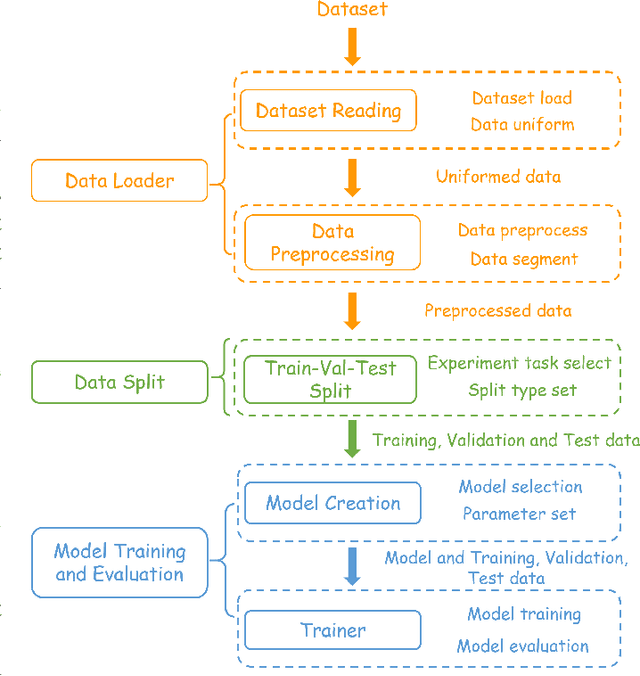
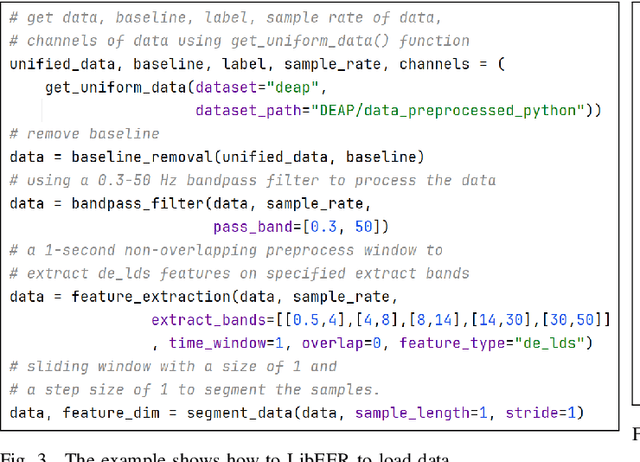
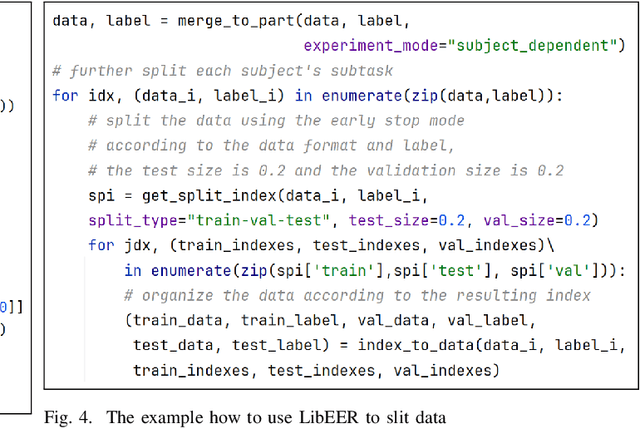
Abstract:EEG-based emotion recognition (EER) is garnering increasing attention due to its potential in understanding and analyzing human emotions. Recently, significant advancements have been achieved using various deep learning-based techniques to address the EER problem. However, the absence of a convincing benchmark and open-source codebase complicates fair comparisons between different models and poses reproducibility challenges for practitioners. These issues considerably impede progress in this field. In light of this, we propose a comprehensive benchmark and algorithm library (LibEER) for fair comparisons in EER by making most of the implementation details of different methods consistent and using the same single codebase in PyTorch. In response to these challenges, we propose LibEER, a comprehensive benchmark and algorithm library for fair comparisons in EER, by ensuring consistency in the implementation details of various methods and utilizing a single codebase in PyTorch. LibEER establishes a unified evaluation framework with standardized experimental settings, enabling unbiased evaluations of over ten representative deep learning-based EER models across the four most commonly used datasets. Additionally, we conduct an exhaustive and reproducible comparison of the performance and efficiency of popular models, providing valuable insights for researchers in selecting and designing EER models. We aspire for our work to not only lower the barriers for beginners entering the field of EEG-based emotion recognition but also promote the standardization of research in this domain, thereby fostering steady development. The source code is available at \url{https://github.com/ButterSen/LibEER}.
Redefining Information Retrieval of Structured Database via Large Language Models
May 09, 2024



Abstract:Retrieval augmentation is critical when Language Models (LMs) exploit non-parametric knowledge related to the query through external knowledge bases before reasoning. The retrieved information is incorporated into LMs as context alongside the query, enhancing the reliability of responses towards factual questions. Prior researches in retrieval augmentation typically follow a retriever-generator paradigm. In this context, traditional retrievers encounter challenges in precisely and seamlessly extracting query-relevant information from knowledge bases. To address this issue, this paper introduces a novel retrieval augmentation framework called ChatLR that primarily employs the powerful semantic understanding ability of Large Language Models (LLMs) as retrievers to achieve precise and concise information retrieval. Additionally, we construct an LLM-based search and question answering system tailored for the financial domain by fine-tuning LLM on two tasks including Text2API and API-ID recognition. Experimental results demonstrate the effectiveness of ChatLR in addressing user queries, achieving an overall information retrieval accuracy exceeding 98.8\%.
Causal Graph Discovery with Retrieval-Augmented Generation based Large Language Models
Feb 23, 2024
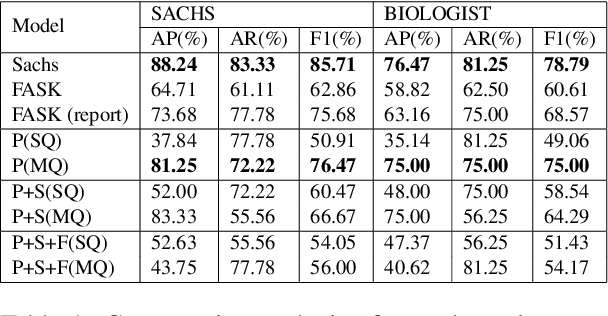
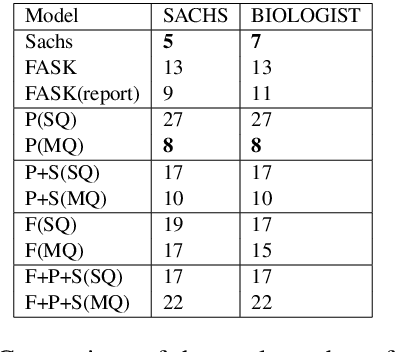

Abstract:Causal graph recovery is essential in the field of causal inference. Traditional methods are typically knowledge-based or statistical estimation-based, which are limited by data collection biases and individuals' knowledge about factors affecting the relations between variables of interests. The advance of large language models (LLMs) provides opportunities to address these problems. We propose a novel method that utilizes the extensive knowledge contained within a large corpus of scientific literature to deduce causal relationships in general causal graph recovery tasks. This method leverages Retrieval Augmented-Generation (RAG) based LLMs to systematically analyze and extract pertinent information from a comprehensive collection of research papers. Our method first retrieves relevant text chunks from the aggregated literature. Then, the LLM is tasked with identifying and labelling potential associations between factors. Finally, we give a method to aggregate the associational relationships to build a causal graph. We demonstrate our method is able to construct high quality causal graphs on the well-known SACHS dataset solely from literature.
CANAMRF: An Attention-Based Model for Multimodal Depression Detection
Jan 04, 2024Abstract:Multimodal depression detection is an important research topic that aims to predict human mental states using multimodal data. Previous methods treat different modalities equally and fuse each modality by na\"ive mathematical operations without measuring the relative importance between them, which cannot obtain well-performed multimodal representations for downstream depression tasks. In order to tackle the aforementioned concern, we present a Cross-modal Attention Network with Adaptive Multi-modal Recurrent Fusion (CANAMRF) for multimodal depression detection. CANAMRF is constructed by a multimodal feature extractor, an Adaptive Multimodal Recurrent Fusion module, and a Hybrid Attention Module. Through experimentation on two benchmark datasets, CANAMRF demonstrates state-of-the-art performance, underscoring the effectiveness of our proposed approach.
Diffusion-based Blind Text Image Super-Resolution
Dec 13, 2023Abstract:Recovering degraded low-resolution text images is challenging, especially for Chinese text images with complex strokes and severe degradation in real-world scenarios. Ensuring both text fidelity and style realness is crucial for high-quality text image super-resolution. Recently, diffusion models have achieved great success in natural image synthesis and restoration due to their powerful data distribution modeling abilities and data generation capabilities. In this work, we propose an Image Diffusion Model (IDM) to restore text images with realistic styles. For diffusion models, they are not only suitable for modeling realistic image distribution but also appropriate for learning text distribution. Since text prior is important to guarantee the correctness of the restored text structure according to existing arts, we also propose a Text Diffusion Model (TDM) for text recognition which can guide IDM to generate text images with correct structures. We further propose a Mixture of Multi-modality module (MoM) to make these two diffusion models cooperate with each other in all the diffusion steps. Extensive experiments on synthetic and real-world datasets demonstrate that our Diffusion-based Blind Text Image Super-Resolution (DiffTSR) can restore text images with more accurate text structures as well as more realistic appearances simultaneously.
 Add to Chrome
Add to Chrome Add to Firefox
Add to Firefox Add to Edge
Add to Edge